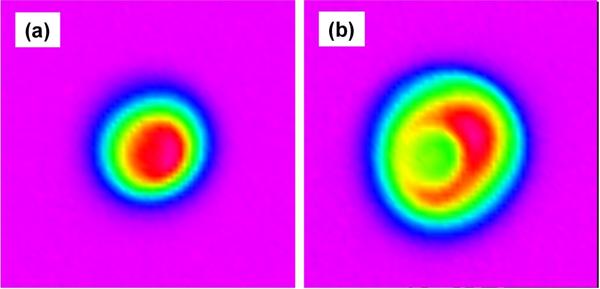Due to high conversion efficiency, robustness, easy thermal management and excellent beam quality, single-mode high-power fiber lasers have been developed for a wide variety of applications, such as industry, science and defense. In the past two decades, the large-mode-area (LMA) double-cladding gain fibers and high-brightness semiconductor laser diodes lead to an exponential evolution on the output power of the single-mode fiber lasers. However, the evolution is suffering from a sudden halt due to mode degradation phenomena.
Initially, the first observed mode degradation phenomenon is thermally-induced transverse mode instability (thermally-induced TMI), which is mainly caused by the quantum-defect (QD) effect happened in the process of stimulated radiation and the photodarkening (PD) effect. It has become a big limitation for further enhancing the output power of single-mode high-power fiber lasers. Thus, the thermally-induced TMI attracts a great attention not only from the scientific community but also from industry, which has led to a significant effort in worldwide to understand and suppress the thermally-induced TMI. Soon after, a lot of effective approaches to suppress thermally-induced TMI have been proposed, such as optimizing the size and core diameter of gain fibers, reducing the wavelength difference between the pump and signal light, modulating pump power, and so on.
Very recently, a new type of mode degradation phenomenon, mode distortion induced by the stimulated Raman scattering (SRS), is proposed, but mode distortion and SRS effect were considered initially as independent phenomena. The SRS-induced mode distortion occurs suddenly and the beam quality deteriorates immediately once the output power of fiber laser exceeds a certain value (several hundred to several thousand watts), which exhibits obvious threshold behavior. The key characteristic of SRS-induced mode distortion was reported as: when SRS emerges, the SRS-induced mode distortion appears immediately, and when the SRS effect is suppressed, the SRS-induced mode distortion disappears immediately, which is very different from the thermally-induced TMI. Unfortunately, the SRS-induced mode distortion has also become a new obstacle for further developing single-mode high-power fiber lasers. Therefore, it is very important to develop the effective suppression strategies on the SRS-induced mode distortion.
Recently, the research group led by Prof. Wenhui Fan from Xi'an Institute of Optics and Precision Mechanics, CAS investigated the SRS-induced mode distortion and an approach for effective suppression of the SRS-induced mode distortion in high-power fiber amplifiers has been proposed and demonstrated experimentally. The research results are published in High Power Laser Science and Engineering, Vol. 9, Issue 2, 2021 (Wei Gao, Wenhui Fan, Pei Ju, et al. Effective suppression of mode distortion induced by stimulated Raman scattering in high-power fiber amplifiers[J]. High Power Laser Science and Engineering, 2021, 9(2): 02000e20).

Figure 1 Schematic of the experimental setup
In this work, an approach on effective suppression of the SRS-induced mode distortion in high-power fiber amplifiers has been demonstrated experimentally by adjusting the seed power and forward feedback coefficient of the rear port in the seed source. It is shown that the threshold power of the SRS-induced mode distortion can be increased significantly by reducing the seed power or the forward feedback coefficient. Moreover, it has also been found that the threshold power is extremely sensitive to the forward feedback power from the rear port. The mechanism of the seed power and forward feedback coefficient on the threshold power of the SRS-induced mode distortion has also been analyzed. This suppression approach will be very helpful to further develop the single-mode high-power fiber amplifiers.

Figure 2 (a) The beam profile before the SRS-induced mode distortion happened, (b) The beam profile after the SRS-induced mode distortion happened.


